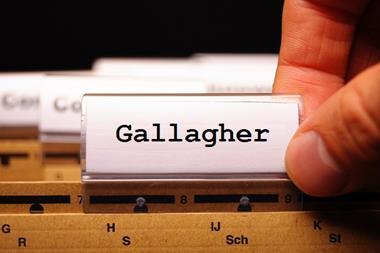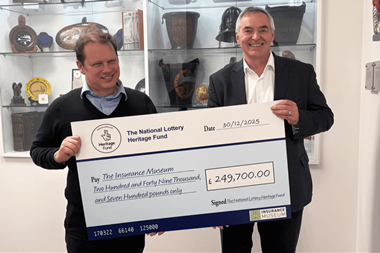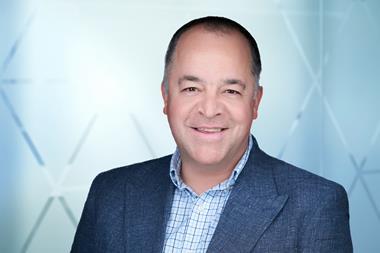Gallagher gave examples of where it said witnesses had given “deliberately misleading evidence” in its closing submissions to court
Gallagher accused Ardonagh witnesses of being untruthful and misleading in its closing submission to the court yesterday.
In the battle over Ardonagh’s alleged unlawful poaching of Gallagher staff, the submission referred to Ardonagh’s witnesses as giving “deliberately misleading evidence” and “unwilling to accept the plain reality of documents.”
Gallagher’s counsel claimed “significant points made in the defendants evidence are demonstrably untrue and/or designed to mislead,” and that “the witnesses’ purpose was not to assist the court by telling the truth but was, instead, to set up a defence to these claims.”
Examples given included Ardonagh chief executive David Ross failing to recall details of key meetings and an incomplete disclosure of phone messages and call logs from the defendants.
Ardonagh’s closing submissions, submitted on Wednesday, have strongly refuted the allegations from Gallagher.
In particular, it said “Ross was an intelligent and thoughtful witness, doing his best to assist the court and making concessions where appropriate.”
It said criticisms that Ross failed to recall meetings were “unreal” given the size of the group and that they happened two years ago. It said Ross has 3,000 meetings a year and that expecting him to recall specific details of particular meetings was unrealistic.
The case hinges on the departure from Gallagher of specialist energy brokers Peter Burton, James Brewin, Nawaf Hasan and Gerard Maginn.
They all joined either Bishopsgate or fellow Ardonagh subsidiary, Price Forbes, in the summer of 2017.
Gallagher claims it was an example of unlawful “team” recruitment, former Gallagher director Ross’s desire for “revenge” against his former employers.
Ardonagh on Wednesday delivered its closing submissions to the court disputing these claims, but yesterday it was Gallagher’s turn to summarise its case against the Ross-run group.
Conspiracy
Gallagher counsel Gavin Mansfield told the court there were gaps in the evidence presented by Ardonagh and argued that key witnesses had given untruthful and misleading evidence during questioning.
Mansfield said: “There are a number of factors that do not stack up and those are from which we infer the conspiracy from which we allege. These issues still do not add up.”
He pointed to instance heard in court of Hasan arranging a meeting involving himself, Ross and client while Hasan was still contracted to Alesco, as an example of Ardonagh’s disregard for acting lawfully.
He said this followed through to the recruitment of Gallagher employees.
“David Ross said this recruitment process was set up to be done in a lawful way,” Mansfield said. “But then why do we such moments of unlawful behaviour? It is part of a broader pattern of unlawful behaviour.”
Ardonagh has cited a May 2017 meeting in which it was stated that the company’s pursuit of Hasan and Burton would likely lead to litigation and that separate recruiters should be used, as evidence that the company was seeking to act in a lawful way.
But Mansfield suggested to the court this action was being used as a cover for Ross’s true recruitment tactics.
He said: “Consider the absence of evidence that you would expect to see if this was a lawful recruitment. The use of segregated recruiters tells us nothing and is bearing a lot of weight for the defence.
“This wasn’t a recruiter being asked to find someone, it was asking them to approach individuals.”
Commonality
Mansfield told the court there was significant points in common that made the exits of Burton and Hasan suspicious. This included both using the same solicitors and both allegedly lying to Alesco in their exit interviews about their next destination.
“It’s unusual for one, but for both suggests wrongdoing. Not only does it show untruthfulness it also shows collaboration,” Mansfield told the court.
“The other picture that is curious is both acted in ways amounting to a breach of their obligations.”
The alleged breach from Hasan was the sharing of the Bishopsgate business plan with Ardonagh, while Burton accepted a £625,000 interest free loan from Ardonagh.
Mansfield touched on both incidents and suggested they were unlawful and part of the “conspiracy” to damage Gallagher.
“If the same thing (the employees leaving) would have happened if everyone were to have acted lawfully, then why didn’t they,” Mansfield said.
On the sharing of the business plan he said it demonstrated wrongdoing on both Hasan’s part and that of Bishopsgate.
“The business plan operates in a number of different ways,” Mansfield told the court. “First the fact it was a misuse of confidential information.
“And second the fact it encourages the recruitment of Mr Maginn is a breach of fiduciary duty.”
Breaches
While Hasan denied that the business plan encouraged the immediate recruitment of Hasan, Gallagher’s submission states this is evidence of Ardonagh witnesses failing to accept what is shown in documentation.
“It’s a component of the conspiracy and is evidential of the conspiracy,” Mansfield said.
On the interest-free loan, which it was revealed yesterday was finally fully paid back after several extensions only last month, Ardonagh and Burton’s defence argued there was nothing unlawful in his accepting the loan.
But Mansfield said it was both Burton’s acceptance and failure of disclosing the loan to Alesco, that amounted to a breach.
“How can the employee be confident they are protecting and promoting their employer rather than being influenced by the company that has given them the money,” Mansfield told the court.
“The simplest way around it is to disclose it.
“Any employer learning that their employee had taken this money would not want them working for them, because they could not have confidence in them.”
The trial continues today.
Hosted by comedian and actor Tom Allen, 34 Gold, 23 Silver and 22 Bronze awards were handed out across an amazing 34 categories recognising brilliance and innovation right across the breadth of UK general insurance.




















































No comments yet